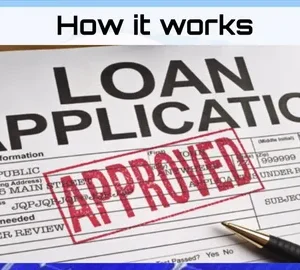Medical expenses can be overwhelming, especially for expensive treatments such as surgeries, specialized therapies, or chronic illness management. If insurance doesn’t cover the full cost, medical loans can provide a financial lifeline, allowing patients to receive necessary treatments without delay.
This guide explores how medical loans work, the best options available, and tips to secure affordable financing for healthcare expenses.
What Are Medical Loans?
A medical loan is a type of personal loan used to cover healthcare-related expenses. These loans can be obtained from banks, credit unions, online lenders, or specialized healthcare financing providers. Unlike medical credit cards, medical loans offer fixed interest rates and structured repayment terms, making it easier to manage payments.
Common Medical Expenses Covered by Medical Loans:
✔ Surgical procedures (elective and emergency)
✔ Cancer treatments and therapies
✔ Fertility treatments (IVF, IUI, surrogacy)
✔ Dental procedures (implants, orthodontics, cosmetic dentistry)
✔ Cosmetic and reconstructive surgeries
✔ Weight loss surgeries (gastric bypass, lap band, etc.)
✔ Mental health treatments (rehab, therapy, psychiatric care)
✔ Medical equipment and assistive devices
Types of Medical Loans
1. Unsecured Personal Loans for Medical Expenses
Most medical loans are unsecured, meaning you don’t need to provide collateral (such as your home or car). These loans are available from banks, credit unions, and online lenders.
✅ Loan amounts: $1,000 – $100,000
✅ Repayment terms: 12 – 84 months
✅ Interest rates: 5% – 36% (depending on credit score)
2. Secured Medical Loans
If you need a large loan or have poor credit, a secured loan may be an option. These loans require collateral, such as a home or car, to reduce the lender’s risk.
✅ Lower interest rates compared to unsecured loans
✅ Higher borrowing limits
✅ Risk of losing assets if payments are missed
3. Medical Credit Cards
Some healthcare providers partner with medical credit card companies to offer 0% interest financing for specific procedures. Popular options include:
- CareCredit – Offers short-term financing with no interest if paid in full within 6–24 months.
- Wells Fargo Health Advantage – Low-interest financing for cosmetic, dental, and vision procedures.
✅ Good for short-term financing
❌ High-interest rates after promotional period ends
4. Healthcare-Specific Financing Plans
Some hospitals, clinics, and medical providers offer in-house financing with low or no interest rates. These options may be more flexible than traditional bank loans.
✅ No credit check required in some cases
✅ Custom payment plans based on patient needs
❌ Limited to participating healthcare providers
Best Lenders for Medical Loans
If you’re looking for a reliable lender for medical financing, consider these top options:
1. LightStream
✔ APR: 6.99% – 23.99% (with autopay)
✔ Loan Amount: $5,000 – $100,000
✔ No fees & same-day funding available
2. SoFi
✔ APR: 8.99% – 25.81%
✔ Loan Amount: $5,000 – $100,000
✔ Unemployment protection available
3. Upstart
✔ APR: 6.5% – 35.99%
✔ Loan Amount: $1,000 – $50,000
✔ Fast approval process
4. LendingClub
✔ APR: 8.05% – 35.89%
✔ Loan Amount: $1,000 – $40,000
✔ Great for borrowers with fair credit
How to Apply for a Medical Loan
Applying for a medical loan is simple and usually involves the following steps:
Step 1: Check Your Credit Score
Your credit score determines the loan amount, interest rate, and approval chances. A higher score (above 700) secures lower interest rates, while lower scores may require alternative financing.
Step 2: Compare Lenders
Research and compare different lenders, interest rates, repayment terms, and fees to find the best deal.
Step 3: Gather Required Documents
Lenders typically require:
✔ Proof of identity (driver’s license, passport)
✔ Proof of income (pay stubs, tax returns)
✔ Medical expense estimates or bills
✔ Credit report details
Step 4: Apply for the Loan
Fill out an online application with your chosen lender. Many lenders offer pre-approval with soft credit checks, so you can see estimated rates without affecting your credit score.
Step 5: Receive Funds & Pay Medical Bills
Once approved, funds are deposited directly into your bank account or sent to the medical provider.
Alternatives to Medical Loans
If a medical loan isn’t the right option, consider these alternative financing solutions:
✔ Payment Plans from Healthcare Providers – Many hospitals offer zero-interest installment plans.
✔ Health Savings Account (HSA) or Flexible Spending Account (FSA) – Use pre-tax dollars to cover medical costs.
✔ Charitable Organizations & Grants – Nonprofits like Modest Needs, The HealthWell Foundation, and CancerCare provide financial assistance.
✔ Employer Assistance Programs (EAPs) – Some employers offer medical bill reimbursement.
Pros and Cons of Medical Loans
✅ Pros:
✔ Quick access to funds – Ideal for urgent medical expenses.
✔ Fixed repayment terms – Predictable monthly payments.
✔ Lower interest than credit cards – Especially for borrowers with good credit.
✔ No collateral required – Most medical loans are unsecured.
❌ Cons:
✖ Higher interest rates for poor credit – Borrowers with low credit scores may face APRs above 30%.
✖ Potential debt burden – Taking a large loan may cause financial stress.
✖ Origination & late payment fees – Some lenders charge hidden fees.
Final Thoughts
Medical loans can help patients cover expensive treatments when insurance or savings fall short. By choosing the right lender, comparing interest rates, and exploring alternative payment options, you can secure affordable financing and focus on what truly matters—your health.
If you’re considering a medical loan, take time to research your options, read the terms carefully, and ensure it fits within your financial plan. Your health is priceless, and the right financing solution can make all the difference in accessing the care you need.





